
- Home
- Workshops / Tours
- Diary / Blog
- Galleries
- Foreign Trips
- Tasmania 2016
- NE Queensland 2016
- Western Alps 2016
- NE Spain 2016
- Australia's Wet Tropics 2015
- Australia's Top End 2015
- SW Australia 2015
- Switzerland 2015
- Andalucia 2015
- Belize 2015
- Australia 2014
- Switzerland 2014
- Belize 2014
- Bahama Islands 2014
- Switzerland 2013
- Ecuador 2012-2013
- Florida 2011-2012
- Vancouver Island 2011
- Australia 2010
- Peru 2008
- Bulgaria 2007
- Lesvos 2006
- California 2006
- New Zealand 2005
- Extremadura 2005
- Goa, India 2004
- The Gambia 2003
Southern California
29th April - 7th May 2006
Joshua Tree National Park
Joshua Tree National Park spans the transition zone of two major desert ecosystems which are separated mainly by altitude:
1. |
Over 3000ft (1000m) in the western portion of the park the landscape is characteristic of the Mojave Desert. |
2. |
In the less mountainous eastern portion of the park wildlife characteristic of the Colorado Desert dominate. |
I spent 3 days in the park and mainly concentrated my time at two oases: Barker Dam in the western (Mojave Desert) portion of the park and Cottonwood Springs in the south-eastern (Colorado Desert) corner.
Barker Dam
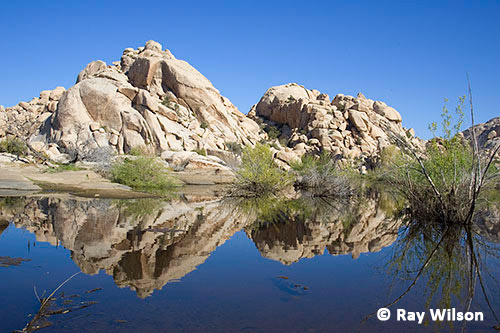
Barker Dam
Barker Dam was built over 100 years ago by pioneer cattlemen to create a water supply for their livestock. There is not always water behind the dam, but in the spring the water levels can be quite high and in some years it remains long enough for wildfowl to breed. There were several American Coot and Mallard on it while I was there.
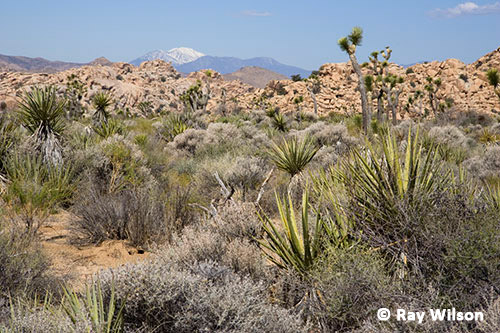
Typical Mojave Desert vegetation with the snow-capped peak of San Jacinto Mountain in the distance
The Joshua Tree is typically only found within the Mojave Desert at elevations between 2000ft and 6000ft (600-1800m). It is the tallest member of the lily family, growing up to 40 feet (12m) in height, and the largest individuals are estimated to be around 900 years old. It was named by mormon pioneers who thought its branches resembled the arms of the Old Testament prophet waving them on towards the promised land...Just goes to show what too much time in the hot sun can do for your imagination!
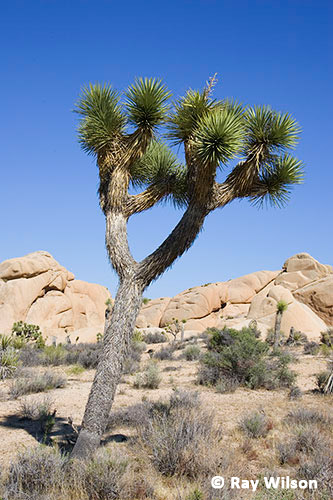 Joshua Tree (Yucca brevifolia) |
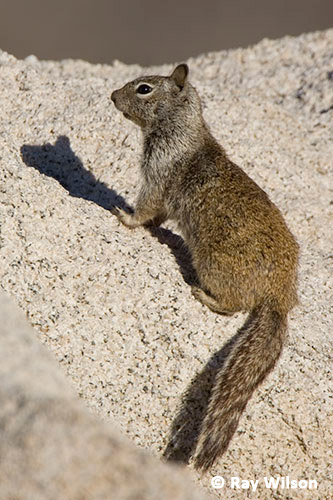 California Ground Squirrel (Citellus beecheyi) |
In the early mornings, mammals were numerous around the parking area and along the trails with Coyote, Black-tailed Jackrabbit, Desert Cottontail, Desert Kangaroo Rat, California Ground Squirrel, Roundtail Ground Squirrel and Whitetail Antelope Squirrel all being observed.
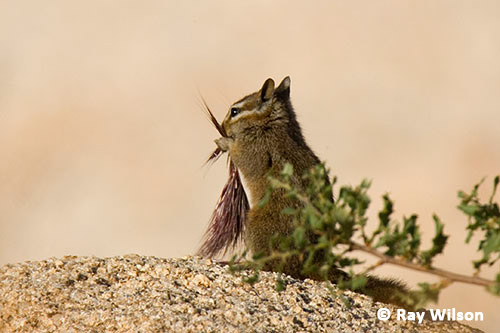
Roundtail Ground Squirrel (Citellus tereticaudus)
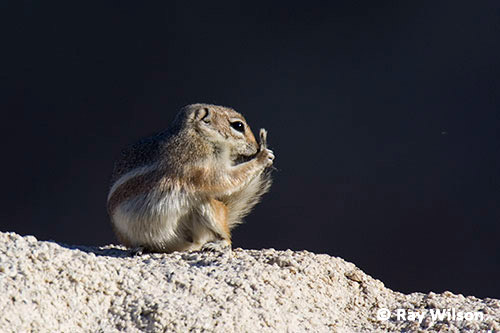
Whitetail Antelope Squirrel (Ammospermophilus leucurus)
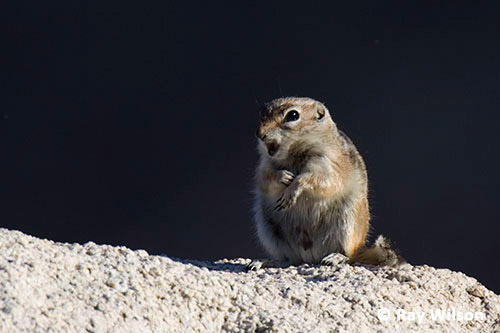
Whitetail Antelope Squirrel (Ammospermophilus leucurus)
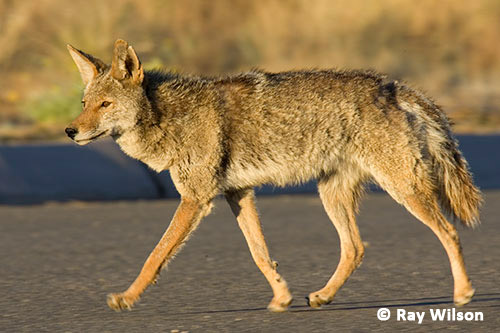
Coyote (Canis latrans)
Lizards were also highly visibly, basking in the early morning sun to get their body temperatures up after a cold night (minimum night-time temperatures were around 10°C).
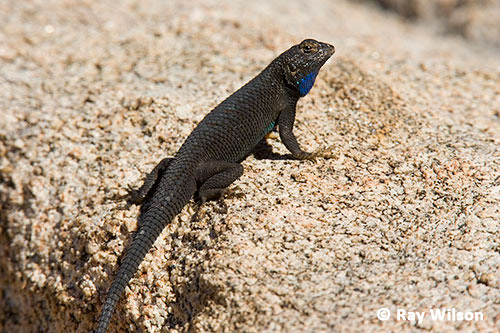
male Granite Spiny Lizard (Scelophorus orcutti)
The above photo shows the most common form of Granite Spiny Lizard. However, occasional individuals, such as the one shown below, are covered with irridescent blue-green scales and are a much more impressive sight.
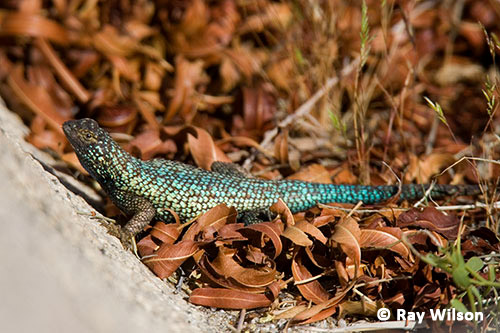
Male light-phase Granite Spiny Lizard (Scelophorus orcutti)
Birdlife was most evident in the bushes close to the pond, with numerous migrant warblers and sparrows coming down for a drink and to bathe...
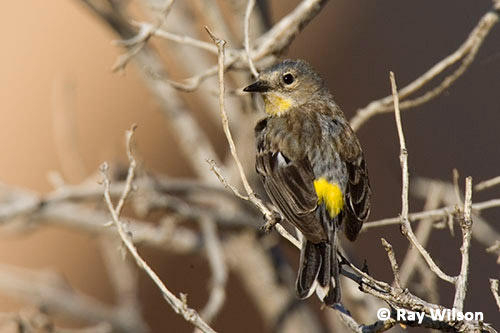
"Audubon's" Yellow-rumped Warbler (Dendroica coronata auduboni)
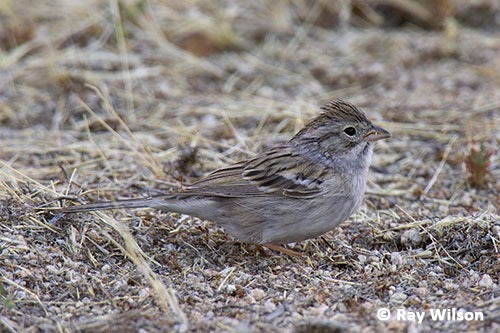
Brewer's Sparrow (Spizella breweri)
...along with residents such as Bewick's Wren...
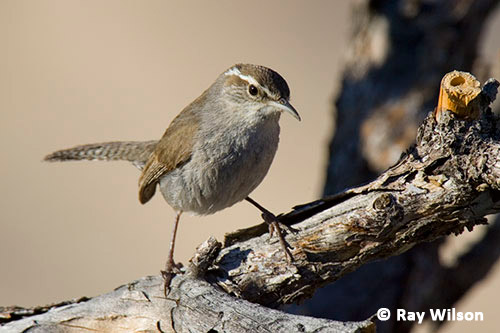
Bewick's Wren (Thryomones bewickii)
...and the impressive, thrush-sized Cactus Wren.
 Cactus Wren (Campylorhynchus brunneicapillus) |
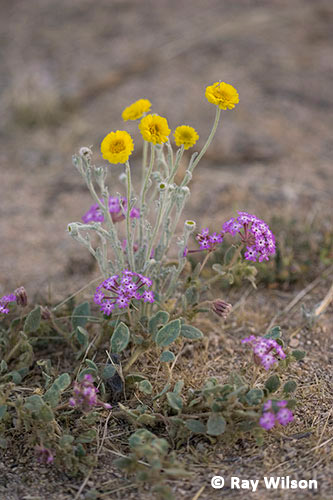 Desert Sand-Verbena (Abronia villosa) |
The deserts in springtime can be quite colourful if there has been recent rain, and in many places flowers were quite plentiful...
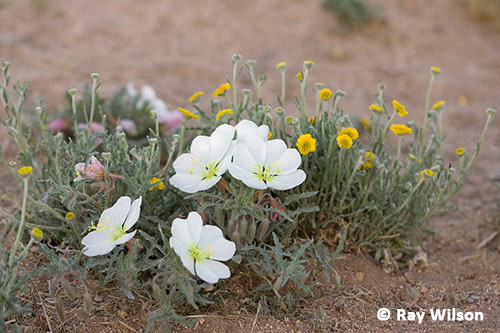
Evening Primrose (Oenothera californica) & Woolly Marigolds (Bailey pleniradiata)
| California map | Joshua Tree (pt.2) |
Ray Wilson owns the copyright of all images on this site.
They may not be used or copied in any form without prior written permission.
raywilsonphotography@googlemail.com